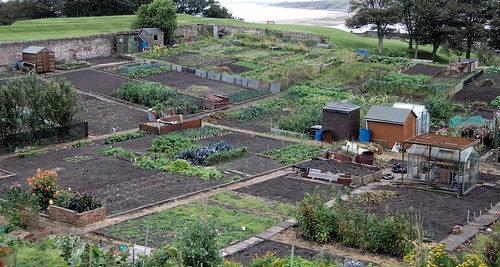Allotment Gardening your First Steps

History of Allotments
Allotments were first introduced in 1845 as field gardens for the landless poor. Originally intended to grow food Victorians thought it would ‘keep them from the evils of drink’. (A cool beer or glass of wine at the end of a session on the allotment is just the job now-a-days.)
In 1908 the Small Holding and Allotment Act made it a duty of Local Authorities to provide allotments where there was a demand.
During both World Wars allotments were a vital source of food & the number of allotments peaked in 1943 at 1.4 million. There is less than a quarter of that number now.
First Steps
- Time spent preparing a new plot is seldom wasted time. Remove weeds.
- Put in permanent structures like good paths, a compost bin, water butt and a shed.
- If the land slopes use raised beds or make a terrace.
- Arrange the beds so you can rotate crops (see below).
- Check the site and association rules.
Planting your Crops
- Grow what your family like to consume or use.
- Easy vegetables to start with include Potato, Leek and Runner Beans.
- Courgettes, Tomatoes and salad crops are only slightly more difficult.
- I would have an area for cutting flowers but that is my personal preference.
- Sow seed sparsely, thin out to avoid over crowding and do not sow too soon in the season.
- Give herbs there own area in the sun.
Crop Rotation
Different plant groups do different things to the soil. Using 4 beds, rotate the following crops around so that after 4 years each bed has been used by each group.
- Potatoes
- Legumes; Peas, Broadbeans, Other beans, mangetout etc
- Brassicas; Cauliflower, Cabbage, Sprouts, Broccoli etc
- Onions and roots
Lettuce, Courgettes are neutral and can go anywhere. Soft fruit and rhubarb may go around the edges or in there own space.